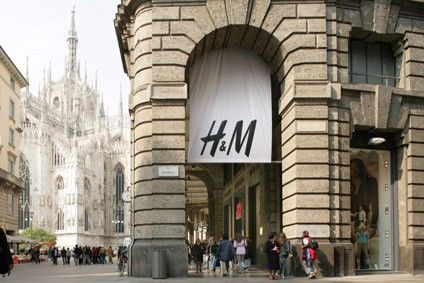
Swedish clothing giant Hennes & Mauritz (H&M) has been named the world’s biggest user of sustainable cotton and man-made cellulosic materials in a move the company says takes it one step closer to its goal of using only recycled or other sustainably sourced materials by 2030.
The retailer beat off competition from 111 other textile and apparel companies that participated in the annual ‘Preferred Fiber & Materials Benchmark Insights Report’ published by non-profit Textile Exchange.

Discover B2B Marketing That Performs
Combine business intelligence and editorial excellence to reach engaged professionals across 36 leading media platforms.
One of H&M’s milestones on its journey to using only recycled or other sustainably sourced materials by 2030 is that all its cotton should come from sustainable sources by 2020.
In 2017, 59% of its total cotton use was organic, recycled or better cotton, while 35% of the materials it used during the year were sustainably sourced or recycled.
“We are proud to be the world’s biggest users of sustainable cotton – which includes organic, recycled and cotton from the Better Cotton Initiative – and sustainable man-made cellulosic materials,” the retailer said.
According to the report, the group is also the world’s biggest user of sustainably sourced down and one of the biggest users of sustainably sourced wool.

US Tariffs are shifting - will you react or anticipate?
Don’t let policy changes catch you off guard. Stay proactive with real-time data and expert analysis.
By GlobalData“With our yearly and steady increased use of recycled or other sustainably sourced materials, we not only push the demand of widely used materials such as organic cotton but also influence the scalability of new sustainable materials. We hope to inspire other players in the industry towards a sustainable fashion future,” says Cecilia Brännsten, environmental sustainability manager at H&M Group.
Meanwhile, US sporting goods giant Nike topped the list of recycled polyester users, while C&A lead on organic cotton usage and Deckers Brands was named the top user of preferred wool.
Others that placed in the top ten lists include Inditex (second largest user of Lyocell and fourth largest user of preferred manmade cellulosics); Target (third largest user of recycled polyester and fifth largest user of preferred down); and The North Face (second largest user of preferred down.)
“The 2018 benchmark leaders show a deep commitment to scaling their global value chains of preferred fibers and to benchmarking their progress against the industry,” said Liesl Truscott, director of Europe and materials strategy for Textile Exchange. “These companies have also made significant investments in developing the supply chain needed to achieve the necessary measures of scale in preferred fiber production.”





